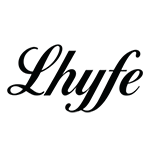

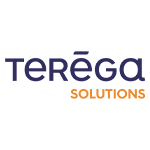
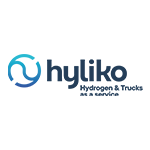
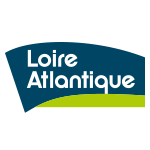
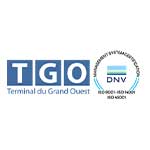
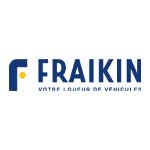



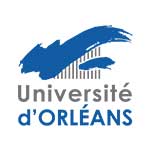
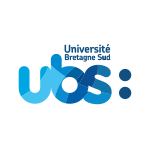
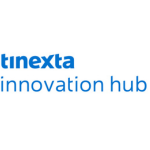

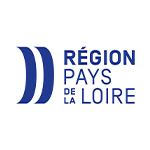
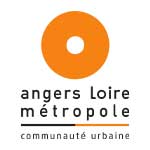
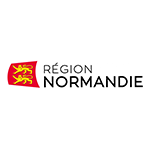
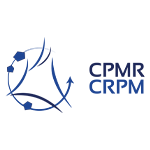
Lhyfe is a European group devoted to energy transition, and a producer and supplier of green and renewable hydrogen. Its production sites and portfolio of projects intend to provide access to green and renewable hydrogen in industrial quantities and enable the creation of a virtuous energy model capable of decarbonising entire sectors of industry and transport.
In 2021, Lhyfe inaugurated the first industrial-scale green hydrogen production plant in the world to be interconnected with a wind farm. In 2022, it inaugurated the first offshore green hydrogen production pilot platform in the world. In 2023, it inaugurated its second and third sites, and currently has several sites under construction or expansion across Europe. Lhyfe is represented in 12 European countries and had 195 staff at the end of December 2023. The company is listed on the Euronext market in Paris (ISIN: FR0014009YQ1 – LHYFE).
ROLE IN THE PROJECT
LHYFE SA is the project coordinator and it will coordinate the proposal and ensure that the ecosystem is fed with hydrogen thanks to 3 novel or expanded plants.

The objective is to support and enable communities to be actors in the energy transition of their territory by relying on a trusted partner, administered by local elected officials.
ROLE IN THE PROJECT

ROLE IN THE PROJECT

ROLE IN THE PROJECT

ROLE IN THE PROJECT

TGO’s experience in heavy-weight cargo also provides us regular clients on the docks of Saint Nazaire. TGO manages all the calls of container vessels in the Port of Nantes-Saint-Nazaire, which represented 155,000 TEUs in 2023. TGO is also in charge of stevedoring general cargo vessels calling at the Port of Montoir-de-Bretagne or Saint-Nazaire. This activity represented a total of 320,000 tons of general cargo in 2023.
ROLE IN THE PROJECT

ROLE IN THE PROJECT

ROLE IN THE PROJECT

Leveraging its speed of execution and agility with its scalable and integrated model facilitating the use of zero emission mobility solutions for as many drivers and customers as possible in the short term, Hype plans to deploy its platform in 15 other regions in France and around the world by the end of 2025.
ROLE IN THE PROJECT

The Energy Planning platform from Tecnalia supports informed decision-making process and helps deciding on the best course of actions during the Energy Transition and decarbonization process.
Our models and tools provide a modelling environment for the comprehensive analysis of the complex energy systems. They also analyse the impacts of different policy options on specific sectors and on multi-sectoral energy systems.
• Analysis of multi-scale energy systems.
• Prospective energy analysis.
• Energy, economic and environmental impact assessment.
• Multi-criteria analysis for the prioritisation of technologies and strategies.
• Comprehensive modelling for energy planning at a city, territory and regional level
In AdvancedH2Valley project, Tecnalia will be in charge of carrying out a comprehensive sustainable analysis of the H2 produced taking into account the impacts of its different life cycle stages and the prospective assessment of the regional energy system. In addition, Tecnalia will collaborate in the evaluation of the technology up-scaling impact in the Atlantic Arc.
ROLE IN THE PROJECT

ROLE IN THE PROJECT

The UBS is multi-faceted and the only public university in the department of Morbihan. It is the only one university offering such a wide range of study programmes, from university bachelor’s degree in technology (B.U.T) and engineering degrees to PhDs. The Université Bretagne Sud owes its growth and influence to a tradition of innovation and proximity to its partners that continues to drive its activities. It has three faculties, two university institutes of technology, 1 engineering school and a business administration institute (IAE).
The Faculty of Law, Economics & Management is located in Vannes, the Faculty of Arts, Languages, Humanities & Social Sciences iis licated in Lorient and the Faculty of Science & Engineering is locatee both in Vannes and Lorient. Each of our campuses has a University Institute of Technology (IUT). The Vannes IUT trains students primarily in IT, statistics, business, management, and accounting. The Lorient-Pontivy IUT prepares students for careers in the environment, thermal and chemical engineering, and logistics. The ENSIBS engineering school trains nearly 300 engineering students in 4 specialities: IT and cyberdefence in Vannes, industrial engineering, mechatronics, civil engineering, power and electrical engineering (including hydrogen) in Lorient.
The business administration institute Bretagne Sud (IAE) is located in Vannes and trains the managers and economists of tomorrow.
ROLE IN THE PROJECT
 Tinexta Innovation Hub has been active since 1995, growing over the years to become a leader in its sector today. Warrant Hub Business Units work in synergy with its Innovation Lab to give their clients the best support tools for the success of their business initiatives and to assist them in the preparation and management of strategic projects: business projects, research projects, training, and technology transfer activities, under National and International support frameworks. The European Funding Development (EFD) team provides consultancy, training, and support on EU-funding opportunities, and in the preparation, negotiation, and management of European proposals, particularly on Horizon Europe calls.
Tinexta Innovation Hub has been active since 1995, growing over the years to become a leader in its sector today. Warrant Hub Business Units work in synergy with its Innovation Lab to give their clients the best support tools for the success of their business initiatives and to assist them in the preparation and management of strategic projects: business projects, research projects, training, and technology transfer activities, under National and International support frameworks. The European Funding Development (EFD) team provides consultancy, training, and support on EU-funding opportunities, and in the preparation, negotiation, and management of European proposals, particularly on Horizon Europe calls.
ROLE IN THE PROJECT
Founded in 1906, the Automobile Club de l’Ouest (ACO) organised the first ever Grand Prix in 1906 and introduced the 24 Hours of Le Mans in 1923. A staunch defender of endurance racing, the ACO contributes to the organisation and promotion of the FIA World Endurance Championship and instigated the WeatherTech SportsCar Championship in the USA, the European Le Mans Series and Asian Le Mans Series. Aside from the world-famous Le Mans 24 Hours, ACO circuits host the 24-hour motorcycle race (24H Motos), the French motorcycle Grand Prix, the 24-hour go-karting event and the 24-hour truck race (24 Heures Camions).
The 24 Hours of Le Mans is a test bed for innovations in automotive technology, the ACO’s main focus in terms of development. The ACO’s commitment to sustainable mobility currently takes the shape of the MissionH24 project to introduce a hydrogen class at the 24 Hours of Le Mans.
The ACO defends the interests of everyday motorists and takes pleasure in offering excellent hospitality to members at motor sports events organised by the club. Driving skills being an important part of the safety and the pleasure of motoring, the club has a driving school, Le Mans Driver, as well as a go-kart complex with simulators and an international standard track. The club’s trackside facilities are a sought-after event venue, often coupled with multi-lingual tours of the circuit. Merchandise and tickets are on sale in outlets in Le Mans, Tours, Rouen, Paris.
ROLE IN THE PROJECT

ROLE IN THE PROJECT

ROLE IN THE PROJECT
Normandy is the northwesternmost of the eighteen regions of France, roughly coextensive with the historical Duchy of Normandy.

Normandy’s name comes from the settlement of the territory by Vikings (“Northmen”) from the 9th century and confirmed by treaty in the 10th century between King Charles III of France and the Viking jarl Rollo.
ROLE IN THE PROJECT

ROLE IN THE PROJECT